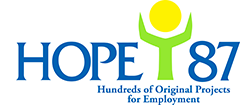New Publication: Working Together for Resilience: Linkages between School-Based Disaster Risk Management and Community-Based Disaster Risk Management
Click here to download the project Report
HOPE’87 Pakistan, CARE International Pakistan and Sustainability Frontiers announce the publication of Working Together for Resilience, a comprehensive study of the interlinkages between community-based and school-based disaster risk management (CBDRM/SBDRM). The book begins by offering a rationale for locating disaster risk management in communities and by laying out key features of community-based disaster risk management. It then explores school-based disaster risk management as an element of comprehensive school safety and examines its key features. Practical means of interlinking and integrating CBDRM and SBDRM are explored including, amongst others, cross-representation on disaster risk management committees, opening informational flows between school and community disaster management bodies, joint planning mechanisms and processes, giving the community an active role on school-based disaster management bodies, instituting overlapping disaster management capacity building, making the school the hub and laboratory for whole-community disaster risk management, and maximizing the contribution youth and children can make to both CBDRM and SBDRM. The book then lays out six models for implementing and achieving interlinked and integrated CBDRM and SBDRM based, in part, upon interview contributions from key stakeholders. Three of the models concern developing an integrated approach within a specific locality; a fourth looks at a multi-locality school-cluster approach to linking CBDRM and SBDRM; the fifth and sixth models shift the focus to one of vertical interlinking of school and locality level, district level and provincial level disaster risk management efforts. The publication ends with a researched account and analysis of the implementation of the three locally-based models in four village locations in Khyber Pakhtunkhwa Province, Pakistan.
Authors: David Selby & Fumiyo Kagawa, Sustainability Frontiers. January, 2019
